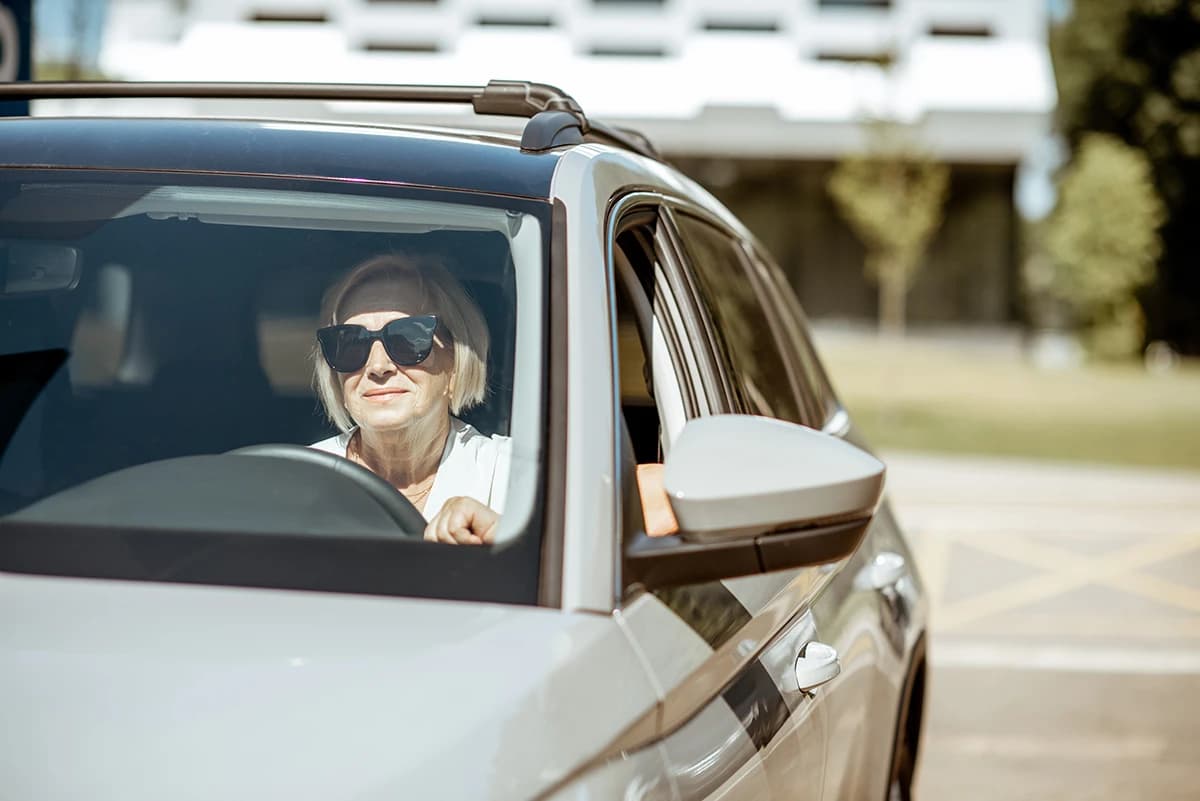“Can you drive with hearing loss?”
Yes, and it’s pretty common. Since one in three adults older than 65 has hearing loss, there’s likely plenty of hearing-impaired drivers on the road. While it doesn’t necessarily prevent you from driving, it can make it difficult to identify and locate important sounds that can affect your safety on the road. That’s why it’s essential to take precautions to optimize your listening ability while driving.
Does Hearing Loss Affect Your Ability to Drive?
Hearing loss doesn’t physically prevent you from driving, but it can pose a problem. Your vision is the most important sense on the road, with hearing taking second. It allows you to notice emergency sirens, car horns and mechanical noises that could suggest there’s an issue with your vehicle. Your other senses can begin to compensate for your lack of hearing, which can result in increased cognitive load and mental fatigue.
Tips for Driving with Hearing Loss
Wearing hearing devices reduces the effort your brain has to put into analyzing sounds, so you can dedicate more mental energy to focusing on the road. That can improve your awareness of your surroundings and enhance your safety when you’re driving.
Here are some best practices to optimize your hearing behind the wheel:
- Charge your devices: Today’s hearing aids require efficient charge to power the different functions and programs. Keep replacement batteries on hand or recharge your devices overnight before you get in your car.
- Reduce background noise: Turn your car radio down and roll up the windows to decrease wind noise and other auditory stimuli.
- Minimize distractions: Driving with others is a good time to socialize, but chatter can make it difficult to hear important sounds. Ask your passengers to keep their voices low or use a handheld microphone to stream enhanced speech to your hearing aids.
- Expand your field of vision: You can add wide-angle mirrors to your rearview and sideview mirrors to increase your visual perception.
- Get your vision checked: If you’re driving with hearing loss, it’s crucial to keep your vision sharp. Annual eye exams are recommended for people 40 and older.
Optimize Your Hearing Aids for Driving
Most modern hearing aids have wireless features that allow you to connect your devices to your car so you can stream audio for hands-free calling. That reduces the risk of distraction that can accompany looking at your phone while you’re driving. You can also simplify tracking directions by using Bluetooth connectivity to listen to GPS cues.
Your audiologist can adjust your device programming to account for the acoustic challenges you may encounter on the road. That may include changing your hearing aid’s microphone direction, enhancing wind noise reduction and adjusting background noise masking. It’s also essential to perform regular hearing aid cleaning and maintenance to ensure your devices function properly.
Consider a Driving Assessment
If you’re unsure about driving with hearing loss, you may consider participating in a professional evaluation to determine your ability to travel safely. This type of assessment is available at clinics, hospitals, AAA and AARP. Participating in a driving assessment can provide you with an objective perspective and give you and your loved ones answers when it comes to how your hearing health affects your skills on the road.
During the test, you’ll complete an interview, background review and clinical tests for your vision, hearing, motor skills and cognitive ability. Afterward, you’ll complete an on-road or simulated driving evaluation.
Comprehensive Audiology Services at Hearing Associates
Having a dedicated team by your side can make the journey toward better hearing a more enjoyable one. The experts at Hearing Associates are not only committed to addressing your auditory issues, but they also strive to enhance your overall quality of life. We offer a variety of services and testing options to provide you with the insight and tools you need to make informed decisions. Call 888-760-2032 or schedule your appointment online.


